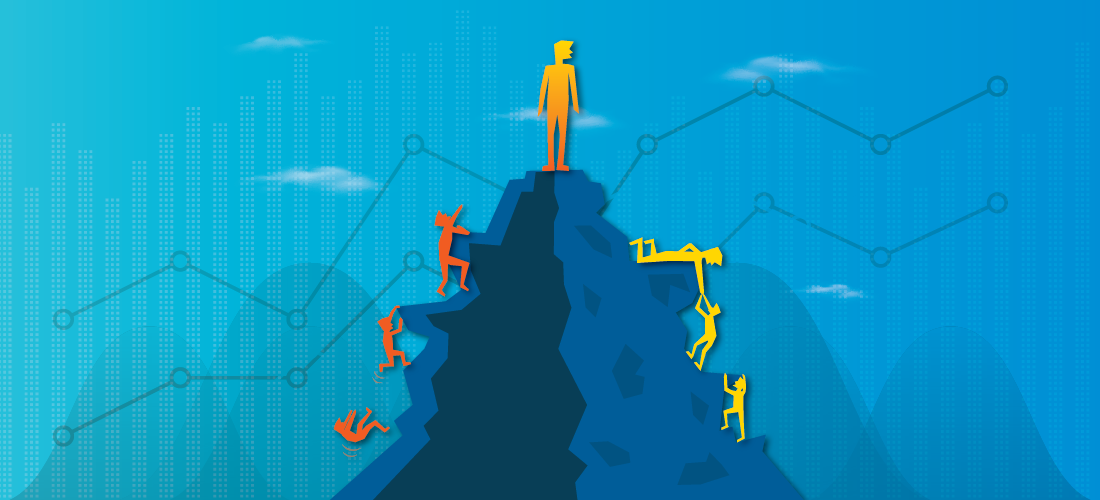Any hiker will tell you that they tend to focus on the effort required to scale a mountain, and that it’s easy to forget that you use a different set of muscles to safely come down from it. Take it too fast and you’ll find yourself spiraling out of control.
In its own way, transforming the workplace and your business over the past few months has been a mountain to climb – an unprecedented set of operational, financial, and people challenges. At the time of writing, 12 states are preparing to reopen their economies and establish a ”new normal.” It can be tempting to feel like you’ve conquered the mountain and that now, with your new policies and procedures, all that’s left to do is forge ahead.
But before you start running down the mountain, consider:
- Have you adequately communicated the ”why” and the “how” behind your new strategy and plans?
- What changes have been – or will be – required of your employees? How have these affected their present and future capabilities?
- You know how you’re feeling about the future. How confidently can you articulate the same for your people? Do you know their hopes and their concerns?
70% of initiatives fail because of people-related concerns.
One reason for this is that change introduces uncertainty, and uncertainty initiates the fear response within our brains (just ask a neuroscientist). That fear response, even if subconscious, inhibits our morale, productivity, and effective decision-making. If a “typical” organizational change in strategy can have those effects, imagine the emotional effect of COVID-19, given the magnitude of uncertainty introduced into our lives and work. The impact these feelings have on an organization can be catastrophic when you’re trying to move fast and adopt new strategies.
“But I know what my people are thinking and feeling,” leaders might say. Hopefully, that’s true. But research on the gaps in perception between leaders and the front line shows that it’s easy for leaders to be overly optimistic. Part of this is because an organizational culture tends toward positivity or negativity, while individuals tend to sit in the middle.
So while Culture (with a capital “C”) is shouting, “we’re doing great,” you have a substantial number of individuals who are sitting in their basement office wondering why they aren’t as excited as “everyone else.” Which is easier for leaders to perceive: the noisy Culture, or the private thoughts of the individual?
At Root, “people first” is our specialty. We stand by the conviction that putting people at the heart of your strategy and change efforts propels and sustains success. And we have the results to prove it.
3 Things Affecting Your Peoples’ Ability to Adapt
On the one hand, moving forward from COVID-19 is no different. Success will be defined by how well you understand and can inspire your people. On the other hand, COVID-19 is unlike any change in recent history. Social distancing has affected your balance sheets, but this period has also redefined how people work, along with their physical and emotional capacity for work. Because COVID-19 has introduced so much uncertainty and change in the workplace, it requires a proven and reliable framework to assess how people are feeling and responding to those changes.
By understanding where your people are now, you can build the roadmap for where you need them to go. On my journey to a PhD, I studied how people make decisions in light of uncertainty. Good for one’s mental health? Maybe not. Useful for the current times? Definitely. It turns out, a smart economist during the 1980s put forth a useful, validated framework for understanding how people make decisions (or struggle to do so) when they are uncertain. It includes three areas:
- How your people have experienced the current state of the business
- Their capabilities for continuing to thrive through change
- Their perceptions of how COVID-19 is likely to impact the future of the company and their role in it
By focusing on these three areas, it’s possible to assess the impact of COVID-19 (and to do so quickly).
Understanding these domains (current state, capabilities, and future impact) can help you come down the mountain at a pace that keeps you in control; it will help you prioritize communication, navigate challenges, and identify opportunities.
You’ve proven yourself to be agile and able to weather the storm so far. What are you doing to make sure the 2.0 version of your company and culture guarantees the best possible success? Where are you starting in your communications and strategy deployment? Are you sure it’s the right place to start?









